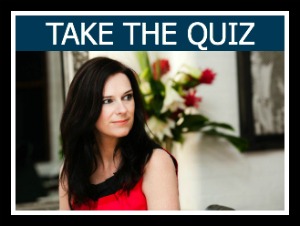My 90:5 rule to double my productivity
Translation: I always have a million and one things on the go and I need to stay focused to get it all done.
The problem is that I’m a bit of a workaholic. I love my business. I love creating. And I love organizing, planning and brainstorming.
But I was beginning to notice that my work was starting to suffer because I was working for hours at a time without stopping.
I would get on a roll and figured, “I’ll take a break once I finish this” or, “It’ll just take me another second, then I’ll take a break.”
But before I knew it, two, three, four… hours would go by and I’d literally have to peel my eyes off of my computer and get up to go do something else because my head hurt and my eyes were exhausted.
Know the feeling?
Well, I have good news! I found a solution that I truly believe has more than doubled my productivity.
I call it the 90:5 rule. I work for 90 minutes, take a 5 minute break, and then go back to work for another 90 minutes and continue the cycle.
Why? Well studies suggest that our productivity starts to go south after about 90 minutes. We have a tough time focusing and our brains are too tired to give us all they’ve got.
So, instead of pushing through and exhausting myself, I take a 5 minute break every 90 minutes. What do I do? I dance.
Yup, I actually put on some music and dance.
At first I did feel a little ridiculous dancing by myself – I made sure I went to my bedroom with the blinds closed – but now I absolutely love it!
And trust me. I’m not a professional at this. I have absolutely no background in dance (other than the one class I took as a kid which just reaffirmed that I wasn’t meant to be a dancer!), but it doesn’t matter.
The point is to get up, get moving and get away from whatever I was doing so I can come back fresher and ready to tackle another task.
Why does this work? Because I’m giving my brain a total break. I’m not reading emails. I’m not reading a book. I’m not thinking about something else. I’m not taking a “break” from one task and doing another. My brain gets to just completely relax and reboot.
Now, I totally think you’d love it too if you adopted the 90:5 rule. But that doesn’t mean you need to dance. You might work in an office and not want to explain to your co-workers why you get up and dance every 90 minutes (unless they’d wanna join in on the fun!)
If you don’t want to dance, that’s cool. The key is to just do something that you don’t really need to use brain power for. You aren’t reading anything, and it’s something where your mind gets a total break. A bonus would be if you moved as well – go for a walk, take the stairs a couple times, walk over to the break room and grab some tea.
By taking breaks like this, I’m positive it’s more than doubled my productivity because I’m able to get more quality work done. Sure if I plowed through I could probably get just as much work done, if not more. But by taking breaks, I make sure that the work I do, do is actually good.
It helps me stay focused too. I set goals for what I want to get done in 90 minutes and work hard to get it done. It works because I know in a little while I get a break and can celebrate my great work with a dance off!
At the end of the day I feel like I’ve accomplished so much more since starting this habit. I’m also not so bagged that I can’t enjoy my life outside work either!
So, if you’re ready to give your productivity a boost, give it a try. I’d love to hear how it works out for you.
About Jenna Dalton
As a former Personal Trainer and Nutrition Consultant, Jenna Dalton quit her job and built a coaching practice for women who know they should exercise, they just have a tough time actually doing it. Using her background in psychology, she continues to study how to be successful – for life. She now helps women turn “I should” into “I have” by using simple shifts that lead to big, lasting change – no deprivation diet or make- you-wanna-die workout required. You can find her at JennaDalton.com where you can get email updates on having the body and life you crave – for free!
Website: http://JennaDalton.com
Facebook: https://www.facebook.com/pages/Jenna-Dalton-Health-Life-Coaching/282110061831248
Twitter: https://twitter.com/DaltonJenna
YouTube: http://www.youtube.com/channel/UCKxRUNx3mAjBGeKqsLSG7Hw?feature=guide
Email: [email protected]
If you've enjoyed this post, in the comments below, tell me how you're getting on with the daily challenge of productivity. I'll be trying this technique out to increase my productivity. I might even set an alarm on my iPhone to make sure I do it, as I suffer from the syndrome i.e. workaholic that Jenna discusses. Let me know what action you'll take as a result of reading this post too. I'd love to hear.
Thank you, as always for reading and contributing here. If you found this useful, please share it with your friends!
With love and gratitude,













Follow Us